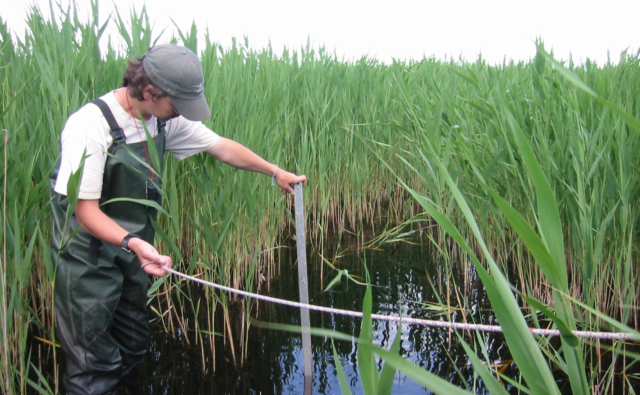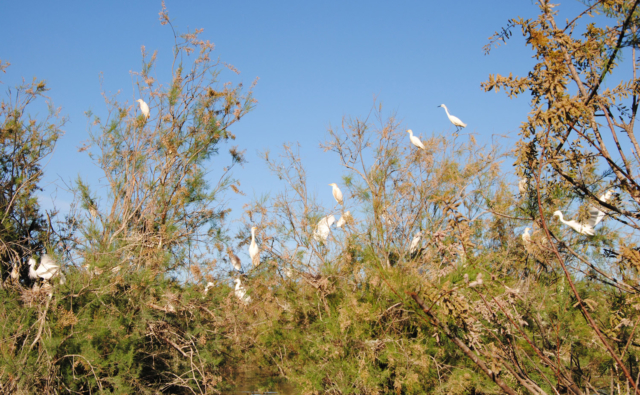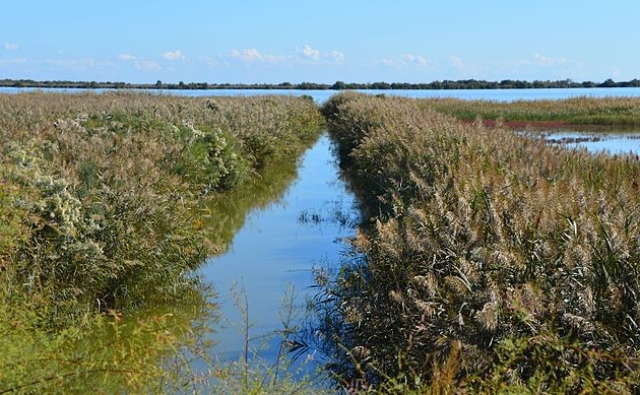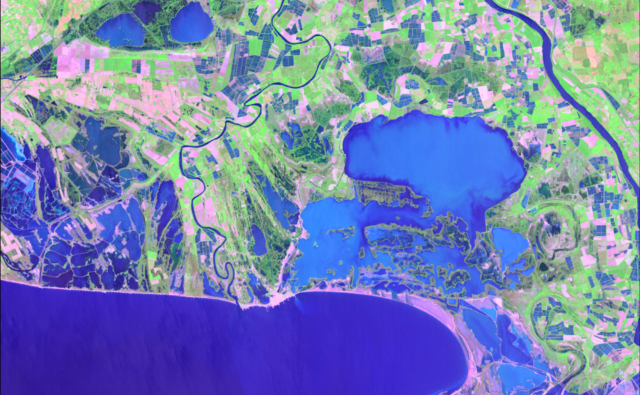The Tour du Valat signed the appeal supported by 54 experts and institutions from 17 European countries in favour of forbidding lead shot in wetlands.
This open letter – reproduced below – was sent to the European Union.
It is based on the overwhelming scientific evidence that now exists concerning the very high toxicity of lead for human and animal health. To a large extent, its accumulation in the environment is due to hunting activities. This evidence was also used in a recent legal notice produced by the European Chemicals Agency (ECHA), which is in favour of limiting this kind of ammunition.
Vous pouvez retrouver ci-dessous en téléchargement l’intégralité de la lettre ouverte et de ses annexes (en anglais).
The Tour du Valat, which hosts hunting activities on its estate, has already conducted studies that confirm there is lead contamination in the Camargue (see the bibliographical references of the Tour du Valat Resource Centre). In 2011, it also expressed its position on hunting in wetlands (see the document in
ECHA proposal under Regulations1
Restriction proposal on the use of lead gunshot in or over wetlands
Dear Sir or Madam,
We the undersigned European scientists, human health and veterinary professionals with expertise
in the toxic effects of lead ammunition on health of people and wildlife are writing to you to:
1. Applaud the European Commission’s initiative and the substantial body of work, including
extensive stakeholder consultations, undertaken by the European Chemicals Agency (ECHA) to
produce their restriction proposal on the use of lead gunshot in or over wetlands;
2. Agree with the opinion that the use of lead gunshot for shooting in or over wetlands requires
restriction, as proposed by ECHA and adopted by its scientific committees;
3. Urge the Commission, Member States, European Parliament and REACH Committee to support this
important restriction proposal in the form proposed by ECHA which harmonises restrictions across
all wetlands in Europe;
4. Encourage the European Commission to request ECHA to prepare a proposal for further measures
to restrict the use of all lead ammunition and anglers’ lead weights; noting the recent ECHA Annex
XV Investigation Report which reviewed this issue and found “sufficient evidence of risk to justify
further measures”.
In advance of this broader future action, to hasten resolution of this long-standing problem we
encourage Member States to take advantage of the option set out in the current ‘wetland’ restriction
proposal (noting some Member States such as Netherlands and Denmark phased out all use of lead
gunshot in all habitats more than 20 years ago):
“Member States may, on grounds of human health protection and environmental protection, impose
more stringent measures than those set out in paragraphs 1 and 2.” [Paragraphs 1 and 2 being a
restriction on the use of lead gunshot in or over wetlands and its possession in wetlands].
ECHA’s scientific committees also recognise the value of that wider approach in aiding enforcement:
“Considering practicality and enforcement possibilities… a restriction covering all use of lead gunshot
(i.e. a total ban) would be the most appropriate measure.”
The risks posed to human and wildlife health by lead ammunition are documented by an
overwhelming body of scientific evidence. This prompted the publication in 2014 of a Scientific
Consensus Statement by health professionals and scientists in Europe to reduce and eventually
eliminate the release of all lead-based ammunition to the environment, in order to protect human
and environmental health. This statement followed a similar statement in 2013 by, primarily North
American, scientists. Only the replacement of all lead ammunition, with the readily available non-toxic
alternatives, will adequately control the risks.
This open letter is being produced as a freely available document. As scientists and health
professionals working in various relevant disciplines our motivation is to promote appropriate use of
the large body of evidence available in support of initiatives that benefit the health of people, wildlife
and the environment.
We, the undersigned scientists, are a group of 54 professionals from 17 European Countries (15 EU
and 2 EFTA countries).
- REACH is a European Union regulation concerning the Registration, Evaluation, Authorisation & restriction of Chemicals. ECHA is the European Chemicals Agency.
- References and/or links to the extensive body of scientific evidence supporting this letter including
health advice to consumers of lead-shot game meat and relevant international agreements can be
found in the Appendix to this letter.
- Dr Oddgeir Andersen, Research Scientist, Norwegian Institute for Nature Research – NINA,
Fakkelgården, NO-2624 Lillehammer, Norway. - Mr Alessandro Andreotti MSci, Istituto Superiore per la Protezione e la Ricerca Ambientale (ISPRA),
Area per l’Avifauna Migratrice, Via Ca’ Fornacetta 9, 40064 Ozzano dell’Emilia (BO), Italy. - Professor Jon M. Arnemo, Professor of Biomedicine, Inland Norway University of Applied Sciences
(Evenstad, Norway) & Swedish University of Agricultural Sciences, Umeå, Sweden. - Dr Aksel Bernhoft DMV PhD, Senior Scientist, Veterinarian/Toxicologist, Feed Safety Expert,
Norwegian Veterinary Institute, PO Box 750 Sentrum, NO-0106 Oslo, Norway. - Dr Łukasz J. Binkowski, Institute of Biology, Pedagogical University of Cracow, Podchorazych 2 Street,
30-084 Krakow, Poland. - Professor Alan R. Boobis OBE PhD CBiol FRSB FBTS FBPhS, Imperial College London, Ducane Road,
London W12 0NN. - Dr Ruth Cromie, Head of Ecosystem Health, Wildfowl & Wetlands Trust (WWT), Slimbridge, Glos GL2
7BT, UK. - Professor Svein Dale, Professor in Zoology, Norwegian University for Life Sciences, Universitetstunet
3, NO-1433 Ås, Norway. - Professor José A. Donazar, Department of Conservation Biology, Doñana Biological Station, Spanish
Council for Research (CSIC), Spain. - Professor Alan Emond, Professor of Child Health, Centre for Academic Child Health, Bristol Medical
School, University of Bristol, 1-5 Whiteladies Road, Clifton, Bristol BS8 1NU. - Dr Ane Eriksen, Inland Norway University of Applied Sciences, Universitetstunet 3, NO-1433 Ås,
Norway. - Associate Professor, Alina Evans DVM MPH PhD, Inland Norway University of Applied Sciences, Anne
Evenstadsvei 80, 2480 Koppang, Norway. - Professor Dr Jerzy Falandysz, Laboratory of Environmental Chemistry and Ecotoxicology, University
of Gdańsk, 63 Wita Stwosza Str., 80-308 Gdańsk, Poland. - Professor Miguel Ferrer, Research Professor, Spanish Council for Scientific Research (CSIC), Avd. María
Luisa, pabellón del Perú, Sevilla 41013, Spain. - Mr Ian Fisher, International Species Recovery Information Manager, Royal Society for the Protection
of Birds, The Lodge, Sandy SG19 2DL, UK. - Professor A.D. Fox, Department of Bioscience, Aarhus University, Kalø, Grenåvej 14, DK-8410 Rønde,
Denmark. - Professor Antonio Juan García-Fernández, Head of the Area of Toxicology, Department of Health
Sciences, Faculty of Veterinary, University of Murcia, Campus de Espinardo, 30100 Murcia, Spain; and
Head of the Toxicology and Risk Assessment Group, Biomedical Research Institute of Murcia (IMIB-
Arrixaca), 30100 Murcia, Spain. - Professor MAG. Dr. Walter Goessler, Institute of Chemistry, Analytical Chemistry, University of Graz,
Universitätsplatz 1/I, 8010 Graz, Austria. - Professor Rhys E. Green, Department of Zoology, University of Cambridge, Downing Street,
Cambridge, CB2 3EJ, UK. - Professor Andy Green, Research Professor, Estación Biológica de Doñana, Spanish Council for
Scientific Research (CSIC), Spain. - Professor Joan O. Grimalt, Professor of Environmental Chemistry at CSIC, Director of the Institute of
Environmental Assessment and Water Research & Director of the Center of Research and
Development, Institute of Environmental Assessment and Water Research (IDAEA), Spanish Council
for Scientific Research (CSIC), Jordi Girona, 18, 08034-Barcelona, Spain. - Professor Raimon Guitart, Professor (Catedrático) of Toxicology, Toxicologia Facultat de Veterinària –
UAB, E-08193 Bellaterra, Spain. - Professor Fernando Hiraldo, Research Professor, Estación Biológica de Doñana, Spanish Council for
Scientific Research (CSIC), Spain. - Mr Jean Jalbert, General Director, Fondation Tour du Valat, Le Sambuc, F-13200, Arles, France.
Professor Dr Lukas Jenni, Scientific Director, Swiss Ornithological Institute, Seerose 1, CH-6204
Sempach, Switzerland. - Dr Ignacy Kitowski, Senior Lecturer, Institute of Agricultural Science, State School of Higher Education
in Chełm, PL 22- 100 Chelm, Pocztowa 54 Str. Poland. - Professor Lord Krebs Kt FRS FMed Sci, Department of Zoology, New Radcliffe House, Radcliffe
Observatory Quarter, Oxford OX2 6GG, UK. - Dr Med. Vet. Oliver Krone, Veterinary specialist for zoo & captive and wild animals, Leibniz, Institute
for Zoo and Wildlife Research (IZW), Alfred-Kowalke-Strasse, 17, D-10315 Berlin, Germany. - Dr Maja Vihnanek Lazarus, Research Associate, Analytical Toxicology and Mineral Metabolism Unit,
Institute for Medical Research and Occupational Health, 2 Ksaverska cesta, POBox 291, 10001 Zagreb,
Croatia. - Professor Jean-Dominique Lebreton, Emeritus Director of Research, Centre d’Ecologie Fonctionnelle
et Evolutive, CEFE/CNRS, Montpellier, France. - Dr habil. József Lehel DVM, PhD, University of Veterinary Medicine, Budapest Department of Food
Hygiene, H-1078 Budapest, István u. 2., Hungary. - Dr Jonas Malmsten DVM, PhD, Dip. ECZM (Wildl. Pop. Health), Swedish University of Agricultural
Sciences, Department of Wildlife, Fish, and Environmental Studies 901 83 UMEÅ Skogsmarksgränd,
Sweden. - Dr Antoni Margalida, Institute for Game and Wildlife Research, IREC (CSIC-UCLM-JCCM) 13005 Ciudad
Real, Spain. - Dr Emma Martínez-López, University of Murcia., Area of Toxicology. Dpt. Sociosanitary Sciences,
Campus de Espinardo, 30100, Murcia, Spain. - Professor Rafael Mateo Soria, Wildlife Toxicology Group, Instituto de Investigación en Recursos
Cinegéticos (IREC) – Institute for Game and Wildlife Research , CSIC-UCLM-JCCM , Ronda de Toledo 12,
13005 Ciudad Real, Spain. - Dr. Patricia Mateo Tomás, Biodiversity Research Unit (UO-CSIC-PA), Oviedo University, Spain and
Centre for Functional Ecology (CFE), University of Coimbra, Portugal. - Professor Andrew A. Meharg, FRSE MRIA, School of Biological Sciences, University Road, Belfast BT7
1NN, UK. - Professor Stein R. Moe, Faculty of Environmental Sciences and Natural Resource Management,
Norwegian University of Life Sciences, P.O. Box 5003, NO-1432 Aas, Norway. - Dr Paola Movalli PhD, Ecotoxicologist – Research Group Biesmeijer Leader, Working Group 3
(Collections), ERB Facility ICA 16224, Vondellaan 55, 2332 AA Leiden, The Netherlands. - Professor Dr Hanspeter Naegeli, Institute of Veterinary Pharmacology and Toxicology, University of
Zurich, Winterthurerstrasse 260, 8057 Zurich, Switzerland. - Professor Ian Newton DSc OBE FRS FRSE, Emeritus Fellow, NERC Centre for Ecology & Hydrology,
Benson Lane, Crowmarsh Gifford, Wallingford OX10 8BB, UK. - Professor John O’Halloran PhD DSc, Deputy President and Registrar, University College Cork, Ireland.
Professor Dan Osborn, Professor of Human Ecology, Earth Sciences, UCL, London WC1E6BT, UK.
Dr Debbie Pain, Honorary Research Fellow, Department of Zoology, University of Cambridge, Downing
Street, Cambridge, CB2 3EJ, UK. - Professor Christopher M. Perrins LVO FRS, Leverhulme Emeritus Fellow, Edward Grey Institute for
Field Ornithology, Department of Zoology, University of Oxford, South Parks Road, Oxford OX1 3PS,
UK. - Dr Nikolai Petkov, Bulgarian Society for the Protection of Birds, PO Box 50, BG-1111 Sofia, Bulgaria.
Professor Alejandro B. Rodríguez-Navarro, Dpto. Mineralogia y Petrología, Universidad de Granada,
18002 Granada, Spain. - Dr Tony Sainsbury, Zoological Society of London, London NW1 4RY, UK.
Professor Hans Martin Seip, Professor Emeritus, Dept. of Chemistry, University of Oslo, Postboks
1033 Blindern, 0315 Oslo, Norway. - Emeritus Professor Chris J Spray MBE FRSA, UNESCO Centre for Water Law, Policy and Science, School
of Social Sciences, University of Dundee, Dundee, DD1 4HN, UK. - Dr Brian Stollery, Senior Lecturer, School of Experimental Psychology, Priory Road, Clifton, Bristol, BS8
1TU, UK. - Dr Mark Taggart, Senior Research Fellow & Theme Leader, Environmental Contamination and
Ecological Health, Environmental Research Institute, University of the Highlands and Islands, Castle
Street, Thurso, Caithness KW14 7JD, UK. - Dr Giacomo Tavecchia, IMEDEA – CSIC/UIB, c. Miguel Marques 21,07190, Esporles, Spain.
- Dr Stefano Volponi PhD, Ricercatore ISPRA – Istituto Superiore Protezione e Ricerca Ambientale Area
CFN – Pareri tecnici e strategie di conservazione via Ca’ Fornacetta 9 – 40064 OZZANO EMILIA, Bologna,
Italy.



